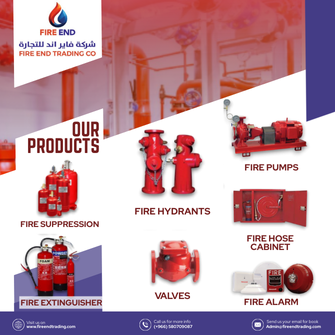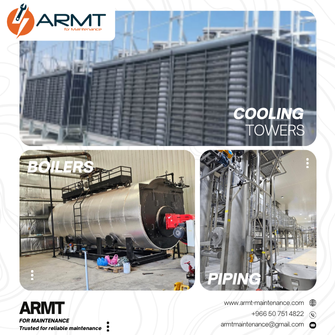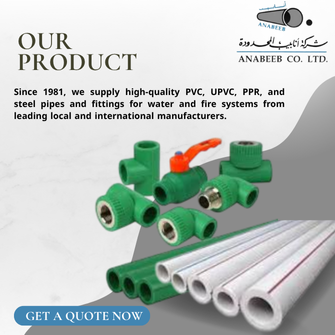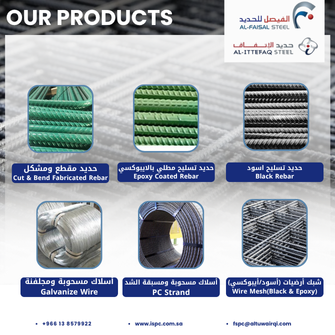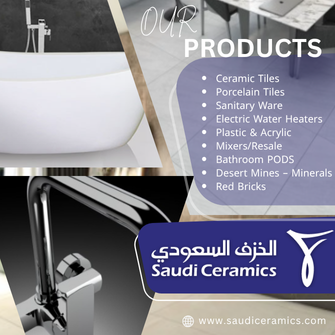Handrails - Glazed Decorative Metal Railings - Stainless Steel - Steel - Aluminum - Iron - FRP
advertisement
Gallery
Product Information
8 Different Types of Staircase Railings, Handrails & Materials
One of the main safety features of a staircase are the handrails and railings, which help prevent falls and injuries. These staircase parts can be made of different materials, such as metal, wood or glass, to achieve different visual effects. The type of stair railing and type of handrail used will also impact the appearance of the staircase.
Handrail vs railing: what’s the difference?
Handrail and railing are two staircase parts that often get confused.
A handrail, also called a banister, is the part of the staircase that people hold onto for support when going up and down the stairs. The handrail must provide stability and a continuous guide along the stair. A handrail can be made of a variety of materials. It can either be attached to a wall, extend from the side of the stair rail, or sit on top of the balusters (vertical posts) on the open side of a staircase.
A railing is the barrier which prevents people from falling off the side of the stairs. A railing must be strong enough to resist breaking if someone falls or pushes on it. Railings can also be made of a variety of materials and can be fashioned in different styles from a series of simple vertical posts which form a balustrade to modern cable railing.
What is the best material for stair handrails & railings?
The best material for stair handrails and railings depends on the environment of the staircase and the look desired. Metals, like steel, aluminum and wrought iron, are popular choices for commercial and industrial settings and contemporary environments, where wood provides a more classic appearance. Glass is often used when the view beyond the railing is important.
Steel
Steel is a popular material for both stair handrails and railings for commercial egress stairs and industrial staircases. Steel is also the best material for stair stringers. To prevent rusting, galvanized or stainless steel is often used. Galvanized steel is coated with zinc to prevent corrosive materials from damaging the steel below. Chromium, nickel, nitrogen and molybdenum are added to stainless steel to allow the metal to resist corrosion.
Steel stair handrail applications
 Steel handrails can be used in just about any environment. A powder coated or galvanized steel handrail is a popular choice for prefabricated industrial stair applications where other components of the stairs are made of steel. For homes and commercial spaces, stainless steel handrails provide a sleek, modern look. Stainless steel handrails can be used with railings made of other materials, like glass, to create a modern design.
Steel handrails can be used in just about any environment. A powder coated or galvanized steel handrail is a popular choice for prefabricated industrial stair applications where other components of the stairs are made of steel. For homes and commercial spaces, stainless steel handrails provide a sleek, modern look. Stainless steel handrails can be used with railings made of other materials, like glass, to create a modern design.
Steel stair railing applications
Steel railings can also be used in a variety of settings including industrial, commercial and residential. When used in industrial environments, steel railings serve to be more functional. In homes and offices, stainless steel railings provide clean lines and a contemporary appearance. They can be used with a variety of handrail materials, such as wood, to create the desired effect.
Steel stair handrail and railing advantages & disadvantages
Pros
- Steel is extremely strong and is known for its durability, making it one of the safest materials to use for handrails and railings.
- Steel can be coated with powder coatings and liquid paints and primers to improve performance.
- Galvanized and stainless steel require very little maintenance and can be cleaned with a sponge and mild detergent.
- Steel is a versatile and weather resistant material that can be used inside or out.
Cons
- In extreme heat, steel can buckle and weaken.
- Steel handrails and railings can be more expensive than other materials, like wood.
- Steel may be a difficult material to use for a DIY project due to its weight.
- Steel is also difficult to install due to its weight and requires special equipment to make on-site adjustments.
Aluminum
Aluminum is a natural element that has a lower density than other metals, making it lightweight compared to steel. Aluminum looks like silver and is very reflective. Aluminum is naturally resistant to rust and corrosion without any additional treatment.
Aluminum stair handrail applications
Aluminum handrails can be found in a variety of settings. They can be used both inside and outside homes, commercial buildings and industrial settings.
Aluminum stair railing applications
Aluminum stair railings are often used outside for entrance steps and decks. However, they can also be indoors in any type of building of facility.
Aluminum stair handrail and railing advantages & disadvantages
Pros
- Like steel, aluminum is very strong and durable and can be used to create a very safe environment.
- Aluminum withstands even the harshest weather environments and requires very little maintenance.
- Because aluminum is much lighter than steel, it’s easier to install and more suitable for DIY projects.
- Due to its lighter weight, aluminum is also easier to cut and form than steel. Therefore, it is available in a wider variety of designs and patterns.
- Aluminum handrails and railings can be powder coated to provide an assortment of color options.
Cons
- The main disadvantage to using aluminum for handrails and railings is that it is more expensive than steel.
- Aluminum handrails and railings can also dent and scratch more easily than steel.
Wrought Iron
 Wrought iron is an iron alloy with a low content of carbon. The demand for this malleable material, often used to achieve a highly decorative effect, reached a high in the mid 1800’s. Today, wrought iron is no longer made on a mass scale but is still produced for restoration and replication of historic work. Most products that look like and are described as wrought iron today are actually made of a mild steel with a low carbon content.
Wrought iron is an iron alloy with a low content of carbon. The demand for this malleable material, often used to achieve a highly decorative effect, reached a high in the mid 1800’s. Today, wrought iron is no longer made on a mass scale but is still produced for restoration and replication of historic work. Most products that look like and are described as wrought iron today are actually made of a mild steel with a low carbon content.
Wrought iron stair handrail applications
Wrought iron handrails can be used for indoor and outdoor staircases in homes and commercial buildings. Wrought iron handrails can be used on both straight and curved stairs.
Wrought iron railing applications
Decorative wrought iron stair railings are found in private residences and office buildings. They can be used in both interior and exterior applications. Wrought iron balusters are often used in combination with wood handrails to achieve a sophisticated and dramatic effect.
Wrought iron stair handrail and railing advantages & disadvantages
Pros
- One of the main advantages of wrought iron is its versatility. Because it is malleable, it can be used to achieve an endless array of looks ranging from a sleek modern style to elaborate leaves or scrolls.
- Due to its strength, wrought iron provides stability and strength to staircases.
- Wrought iron handrails and railings can be powder coated in an assortment of colors.
Cons
- Wrought iron is typically more expensive than other materials, partially because it is frequently custom made.
- Because it is heavy, wrought iron can be difficult and time consuming to install, increasing labor costs.
- If not properly maintained, wrought iron can rust due to weather exposure.
- To protect it from rust, wrought iron needs to be recoated and repainted periodically.
Wood

Wood is the most traditional and classic material used for handrails and railings. Popular woods include red oak, which is easy to stain, sand, and finish, as well as white oak, which is harder and more water resistant. Mahogany, ash, cypress, cherry and many other woods can be used for staircase handrails and railings.
Wood stair handrail applications
Wooden handrails are typically found in homes and residential buildings. The use of wooden handrails can vary from decks to garage stairs to grand staircases in older homes. However, wooden handrails can also be used with more modern railing materials, such as metal or glass, to provide a unique style.
Wood stair railing applications
Wood railings are normally found in traditionally styled residences and buildings, often in entryways. They are commonly used indoors, but can also be out outside on decks and other exterior structures if treated properly. Like wooden handrails, wood railings can be combined with other materials to construct a more contemporary staircase.
Wood stair handrail and railing advantages & disadvantages
Pros
- One of the main advantages of wood handrails and railings is the natural beauty they provide to the environment.
- Wood can be used to achieve a variety of appearances as it can be fashioned in any shape. Wood can also be stained to match your décor or painted to any color desired.
- Because wood is typically affordable to purchase and install, it’s a popular choice for DIY remodel projects.
- Wood handrails and railings are easy to maintain and clean.
Cons
- Interior wood handrails and railings can be seen as dated unless combined with modern materials, like glass or metal.
Glass

While glass may not seem to be a very safe material to use in staircase design, it is actually much tougher than it looks. Glass comes in a number of varieties including clear, semi-transparent, tinted, frosted and etched.
Glass stair handrail applications
Glass is not normally used for stair handrails. Usually, other materials, like wood or metal, are used for handrails with glass railings.
Glass stair railing applications
Glass railings can be used in both interiors or exteriors and are commonly found in modern commercial buildings and homes. The glass panels used for the stair railing can be fully or partially framed with stainless steel or aluminum, or they may be frameless.
Glass stair handrail and railing advantages & disadvantages
Pros
- Glass railings provide a safety barrier without obstructing the view.
- Because they let in natural light, glass railings can make a room seem more spacious.
- When used outdoors, glass railings can act as wind barrier.
- Glass railings are simple to clean.
Cons
- Although glass is easy to clean, it must be done so regularly as dirt and fingerprints can show quickly.
- Birds, animals and even people can bump into glass railings if they are transparent.
- Glass is relatively heavy and can crack during installation if not handled correctly. Therefore, it is probably best installed by a professional.
- When used outdoors, glass railings can weather and become cloudy over time.
What are the different types of railings for stairs?
Staircase railings can be made from a variety of materials including metal, wood and glass. However, there are several different stair railing designs that range from the classic picket railing to more modern cable railing or panels.
Picket stair railing
Picket railing consists of vertical posts that support the handrail. At the bottom, the posts are attached to the base rail or stair treads. Pickets can be made of wood or metal. They can be simple posts or ornately designed.
Picket stair railing applications
Picket staircase railings are the most common type of railings and are used everywhere from industrial plants to commercial buildings to residential homes. Picket railings can be used indoor or out.
Picket stair railing advantages & disadvantages
Pros
- Picket staircase railings are easy to install and least expensive to manufacture
- After installation, picket staircase railings typically do not require maintenance afterwards other than simply wiping them down from time to time.
- Picket railing is available in wide variety of sizes, styles and colors to match nearly any environment.
Cons
- The main drawback to picket stair railing is its common and dated look.
- A picket railing does not provide a completely closed side barrier. While it’s unlikely a person could fall through picket railing, it is possible to drop smaller objects through the pickets.
Multi-line stair railing
Multi-line stair railings consist of horizontal rods or tubes that extend from railing post to railing post. The rods or tubes can be different styles, sizes, and materials to reflect the desired look.
Multi-line stair railing applications
Multi-line railings are commonly used in commercial and industrial buildings for egress stairways and equipment access stairs.
Multi-line stair railing advantages & disadvantages
Pros
- Multi-line railings provide a clean look for egress stairs.
- The rods and tubes used for multi-line railings can be easily altered to meet the design needs of different projects.
Cons
- Multi-line railings can create a potential safety hazard because they can be climbed by children. For this reason, picket railings are a more preferred option for areas accessed by the general public, and some local building codes do not allow them.
Cable stair staircase railing
Cable stair railings use high tension, horizontal or vertical metal cables instead of pickets or panels to provide a barrier on the side of the stairs. Cable railing can be used with a variety of different handrail and newel post materials including steel, aluminum and wood.
Cable stair railing applications
Cable railing can be used on both interior and exterior staircases and is used to provide a modern appearance to homes and commercial buildings.
Cable stair railing advantages & disadvantages
Pros
- Cable railings provide an unobstructed view, as the cable is usually much thinner than traditional pickets.
- Like other metal railings, cable railing is strong, durable and easy to maintain, only requiring occasional clearing.
- Cable railing is versatile and can be easily configured to any space using a wide variety of cable tension kits, post types, and finishes.
Cons
- Cable railing is typically more expensive than glass, aluminum or wood railing.
- Some city and local governments do not allow horizontal railing options like cable railing. When allowed, cable stair rails must be code compliant.
- Due to the amount of cable that’s needed for safety, these railings can seem very busy.
- Since a certain level of tension is also normally required, these types are railings are better when professionally installed.
Wire mesh infill stair railing
Wire mesh infill railings consist of panels of wire that are welded to a four-sided frame. These panel are then attached to the railing system. Wire mesh infill railings can be made from a variety of metals, including stainless steel and aluminum. This type of railing is usually custom manufactured to meet the desired mesh or opening size, wire diameter and panel size.
Wire mesh infill stair railing applications
Wire mesh infill railings are used in industrial settings and high traffic commercial areas such as stadiums, colleges and shopping areas. Wire mesh infill can also be used for residential deck stairs.
Wire mesh infill stair railing advantages & disadvantages
Pros
- Wire mesh infill railing provides a strong, effective barrier but also provides visibility and allows for ventilation.
- Virtually no maintenance is required for staircases with wire mesh infill railing.
- Wire mesh infill can be made of natural metal or painted to match any space.
- High end materials, like copper, can be utilized to create a sophisticated look.
Cons
- Wire mesh infill railing tends to be expensive, in part due to the fact it’s often custom made.
- If not handled properly during installation, the mesh can become damaged.
Panel stair railing
Panel stair railing is similar to wire mesh infill railing in that sections are installed into the railing system. Panel railing is frequently made of glass, but can also be made of open metal bars.
Panel stair railing applications
Glass panel railing is frequently used outdoors but can be used inside as well. Metal panel railing has a wide variety of residential and commercial uses.
Panel stair railing advantages & disadvantages
Pros
- Glass panels provide an excellent view and can also provide protection against wind when used outside.
- Metal panels can be designed in a variety of styles to achieve a customized look.
- Regardless of the material, panel railings are relatively easy to maintain.
Cons
- Glass panel railing is usually more expensive than other types of railing materials up front.
- Neither glass or metal panel railing provide privacy to homeowners or businesses, unless frosted glass is used.
What are the different types of handrails for stairs?
Handrails can be made from a wide range of materials including wood and various metals. However, there are only two different types of handrail design – integrated and wall mounted.
Guardrail-mounted handrail
Guardrail-mounted handrail is a handrail that mounts to the guardrail and extends out into the path of egress to provide a support for the user to grab onto separate from the guardrail.
Guardrail mounted handrail applications
Guardrail-mounted handrail are used on the open side of the staircase. They can be used on one or both sides of the staircase.
Wall-mounted handrail
 Wall-mounted handrails, as the name implies, are attached to the wall and are used in place of an integrated handrail with railings. Steel wall mounted handrails are usually made with round tube or pipe. For wood handrails, pigs ear and mopstick are two common styles of wall-mounted hand rails. Pigs ear handrails are shaped like the animal’s ear when viewed from the side and are secured directly to the wall without brackets. Mopstick handrails are secured to the wall using brackets. and tend to be more decorative in nature.
Wall-mounted handrails, as the name implies, are attached to the wall and are used in place of an integrated handrail with railings. Steel wall mounted handrails are usually made with round tube or pipe. For wood handrails, pigs ear and mopstick are two common styles of wall-mounted hand rails. Pigs ear handrails are shaped like the animal’s ear when viewed from the side and are secured directly to the wall without brackets. Mopstick handrails are secured to the wall using brackets. and tend to be more decorative in nature.
Wall-mounted handrail applications
Wall mounted hand rails are used on the closed or wall side of a staircase. They can be used on one or both sides of a staircase.
Integrated handrail
Integrated handrails sit on top of the stair railing and form a portion of the balustrade. Each end of the handrail is supported at each end by a newel post. Integrated handrails made from wood can be either grooved or ungrooved. With grooved handrails, the railing sits within the grove of the handrail. With ungrooved handrails, the railing is bracketed or screwed into the handrail.
Most building codes including IBC, ADA, and OSHA require a separate guardrail-mounted handrail and no longer allow an integrated handrail.
Integrated handrail applications
Integrated handrails are used on the open side of a stair case where there is no wall. Integrated handrails can be on one or both sides of a staircase. Integrated handrails are no longer allowed by most building codes.
Looking for new opportunities in the Saudi market?
Receiving real RFQs is the key for new orders.
Here in Project Suppliers platform we gain you the new opportunity.





